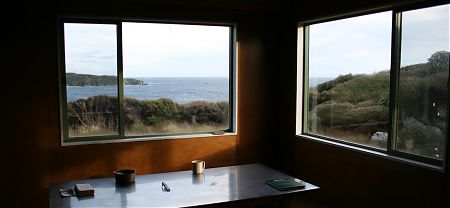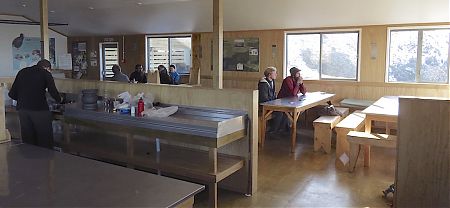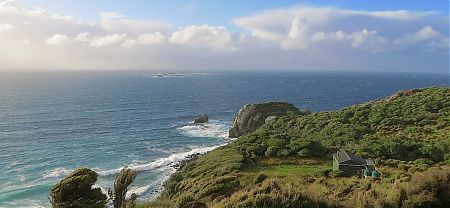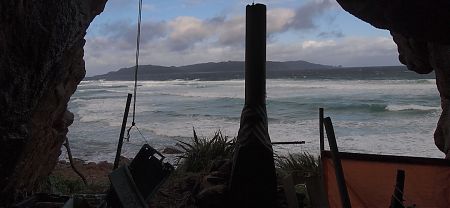Backcountry huts are an enormous resource for New Zealand and they can be used by the general public. With the unpredictable nature of the weather the huts provide adequate shelter, the newer ones are double glazed and well insulated, most have a firebox or open fire, and mean that trampers are not required to carry a tent, unless you are heading to popular huts in peak season.
How good is that?
They say there’s “over 950” backcountry huts managed by DOC in New Zealand, so many they haven’t been able to count them all. Many were built to provide accommodation up valleys for deer cullers in the 1950s and 60s, before the realisation that using helicopters was much more efficient.
This website won’t document all 950 either, just indicate what you might expect of the accommodation.
toilet: Almost always at least a long drop toilet at each hut site, serviced huts can have two or more. Occasionally a bivvy or basic hut doesn’t have one so bury your, umm, whatever, people may not come through often but remains tend to remain for a long while.
water: Something NZ doesn’t generally lack. Many huts have rainwater tanks with the water collected off the roof. In serviced huts there are often inside taps over sinks, in the more standard issue huts you may have to go outside to the tap. Then again, sometimes there’s the old plastic bucket and a walk to the creek. Because it’s rare for the water to stagnate many do not bother to sterilise the water, but if you feel the need it can be filtered, boiled or chemically treated.
heating: Usually serviced and standard huts have some method of heating, either a firebox that needs some initial skill to get going, or, less frequently now, an open fireplace. The firewood is supposed to be supplied at a serviced hut, that’s what you are paying for, to avoid people hacking down the nearby foliage, but at a standard hut you find your own. And leave enough wood to dry for the next party so they can start their fire. Many bivvies have no fireplace.
verandah: Good place to leave boots and dripping raincoats, particularly if there’s a full house.
mattresses: An individual foam mattress covered in fire resistant plastic doesn’t sound much but when it comes time to move to the horizontal you immediately appreciate the full luxury. The plastic ain’t so bad and is useful for removing evidence of other hut inhabitants, of the occasional rodent variety. Helps to demarcate personal space when the hut tends towards capacity. Claim your territory by laying out your sleeping bag.
benches: It’s rare that huts do not have a bench with a stainless steel benchtop, the newer ones, or ancient galvanised steel sheet. But space is limited so try not to colonise the full surface, others may need to use it as well.
What you don’t get:
cooking: There are some huts in alpine areas or on Great Walks where there may be gas stoves provided but in general you need to carry your own stove and cooking equipment. The fireboxes are constructed from thick plate steel, designed for heating, and take considerable fuel, time and skill to start cranking out heat, ie, they are not at all convenient for cooking. You usually don’t get any pots or pans either.
showers: Nah. If you want to wash you head down by the nearby stream.
toilet paper: Remember to take your own. That could be awkward.
rubbish collection: Take all your leftovers out when you leave. It ain’t nice to have to deal with the previous people’s rubbish, particularly after mice have had a hack at it.
a cleaning service: OK, maybe some of you bring your mothers along with you, but in general, as an adult, you tidy up after yourself, ie, wipe benches, sweep the floor, etc.



